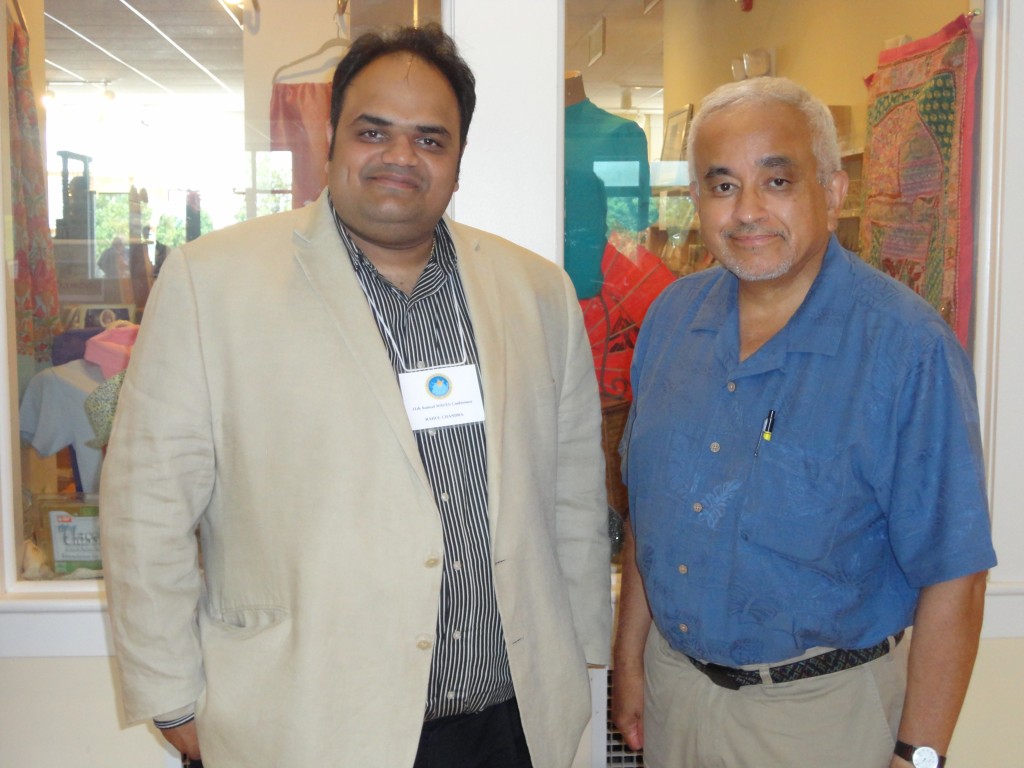
Jose J. Barrera
Jose J. Barrera, a PhD in American literature from the University of Austin and Houston. He has been teaching American Ethnic studies, American literature, Chicano literature, south west studies and other area of academia for many years now in Colorado.
FAIR FIELD, IOWA, USA ( AUG 01,2014)
One of the things I would like to talk about is the rich iconography in the Maya and Aztec cultures and its similarities to Iconographies of Hindu culture in India. The plethora of the manifestation of the divine, all of the so called gods that are found in traditional Hindu belief and also the many manifestations of divine found in Mexican and Mayan Indian cultures. When the Spaniards (Spanish people) arrived in Mexico in 1519 on the mainland of Mexico. So they imposed their European Catholism (Spanish Catholism) on a very robust layer of indigenous religion. Mexican Catholism today is a combination of Spanish Catholism and native beliefs of the Mexican people.
Similarly when British arrive in India, they sought to change the Hindu culture and belief – but they were not successful. The Spaniards also south to change the beliefs and culture of native Spanish people, but they largely were unsuccessful.So there is a kind of general similarity right there.
On the note of similarities between pre -Spaniards Mexican culture and Hindu culture, please provide some similarities use cases.
One striking similarity the immediately grabs one’s attention is the worship of Mother Goddess (Durga, Mahalaxmi and Kali and so on). In the Maso American religion, what we call Aztec religion, the Aztec actually were late comers so they had assimilated many previous cultures during the phases of Spaniards arrival. So there is fearsome form of goddess known as Coatlicue, also known as lady of serpent skirt because she is covered of skirts composed of rising rattle snakes – which are very poisonous. Her head is also composed of two rattle snakes. They fangs of two rattle snakes are facing each other and we have two eyes visible of rattle snakes. She is fearsome because she represents the destructive power of nature, to which the Indians would sacrifice humans. So there were Human sacrifice among Aztec religion, but was greatly misunderstood by Europeans.European view that as gruesome and with horror. But in reality people who were sacrificed did that willingly as there is no higher honor than sacrifice oneself to the goddess and there were other form of human sacrifice as well.
When you look at Coatlicue, there is an immense statue of Coatlicue, on a monolithic stone. One stone carved with the image of Coatlicue – this statue sits in the National Museum of Anthropology and Ancient History in Mexico City. She in her fearsome form is similar to mother Kali in India, who is represented with a garland of human heads, severed hands, has fangs and laps your blood and so on.If you react to mother Kali in fear and loathing, then she will chop your head off, but if you look at mother Kali and love her despite her gruesome aspect, then you passed the test. Then you look at her with compassion and surrenders to her, then she is immediately transformed into the most beautiful maiden that you have ever seen. It’s the same in the Mexican religion, in the Mexican religion, Lady Coatlicue – if you look at her with compassion, she is immediately transformed into a virgin – lady of Guadalupe. Now she is a Spanish goddess, but she is also an Indian virgin, like Kanya Kumari – she is a virgin and of course in the Catholic tradition, she is Lady Virgin, the mother of Jesus Christ.
The Lady of Guadalupe, she is a beautiful maiden, her eyes are cast down but she eclipses the sun because she stands in front of the sun whose rays will shine out behind her. That means that power of goddess is strong enough to overcome the sun, so she transcends the material creation, she supersedes material creation.
Just like in India, the goddess is more powerful is nature herself, even in absolute sense she herself compose nature, s the devotion of Mexican Indian with their native religion, doesn’t seize with the arrival of Spaniards. It just continued, similarly the devotion of the Indian people has persisted for centuries to centuries. In spite of wars and famines, colora epidemic, the cyclones, invaders, the Moguls invaders, the British invaders the devotion of love of people of India for their gods and goddess was never ceased… you see. Similarly in Latin America – Mexico, the masses are still devoted to their ancient forms, but they are under another guide. The ancient forms has adopted another shapes, but they still hold same powers. It’s very similar to India, in the sense that one divinity transcends into multiple formations.
As in Mexico, 95% population is Catholic, how they are able to continue and sustain the ancient culture they have which is similar to Hinduism under Cat holism.
They are able to sustain them because the indigenous communities are family rooted in their traditional culture. They still have the cycle of fiesta, the calendar of fiesta they say – honor that. They still pass on the oral tradition, similar to the situation in India. Because of the persecution inflicted by Church and Spaniards- the gods and goddess take the form of saints now in the Catholic belief system, so you have different Indian gods and goddess in the catholic form of Saints, which is OK… you know since the Saints are very close to God, just like in India, the enlighten beings – the sages, the gurus are very close to God.
Now we have a background, determinant – What can be done in this regard to bring Hindu and Mexican society together in America and worldwide?
That’s a good question, the answer if not that easy. The reality in terms of social and economic reality in US is that the Hindu community in US is so called upper class and professional, whereas the Latino community tends to be lower class and working class. The Latino community is mainly composed of working class people, where the Hindu community is mainly composed of professionals, with high level of professional skills and competence. There are 60 Million Latinos in United States. Most of them are working class, many of them are struggling to survive, but still a very positively thinking community. Good work ethics. We have this great work ethics in common – the Hindu and Latino community.
Nobody is going to give us anything, we have to earn it. What I am saying is that the community that has become an elite community in United States, the Hindu community has gone to the top very rapidly. Latino community on the other hand are further down the ladder, the Hindu community should give them a helping hand in elevating their economic levels.
In that regard, do you suggest formation of Hindu Latino solidarity organization? Just like we have Hindu – Jewish Solidarity groups etc.
That is exactly what I am suggesting Rahul. I strongly suggest formation of Hindu – Latino solidarity group. Houston will be a very good place to start that.
Which groups do you suggest can take lead from Latino community in this regard?
Yes, I would suggest in Houston, that you contact different Latino groups, they have their boards, officers and so on – just the same way you do in Hindu community. I would suggest leaders from Hindu community gets in touch will LULAC – The League of Latino American Citizens. Other group will be American GI Forum – which is Latino American Veteran association, another would be a generally they are called Latino Unity Councils, Mexican American Unity Councils and also in Houston where you have the largest Latino group is the Catholic Church, talk to some priests there and see if they are interested in working together.
Thank You Dr. Jose J. Barrera for the interview, it was a pleasure to discuss on Latino –Hindu community integration points!
Thank you for having me at World Hindu News!







